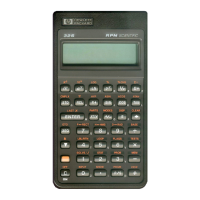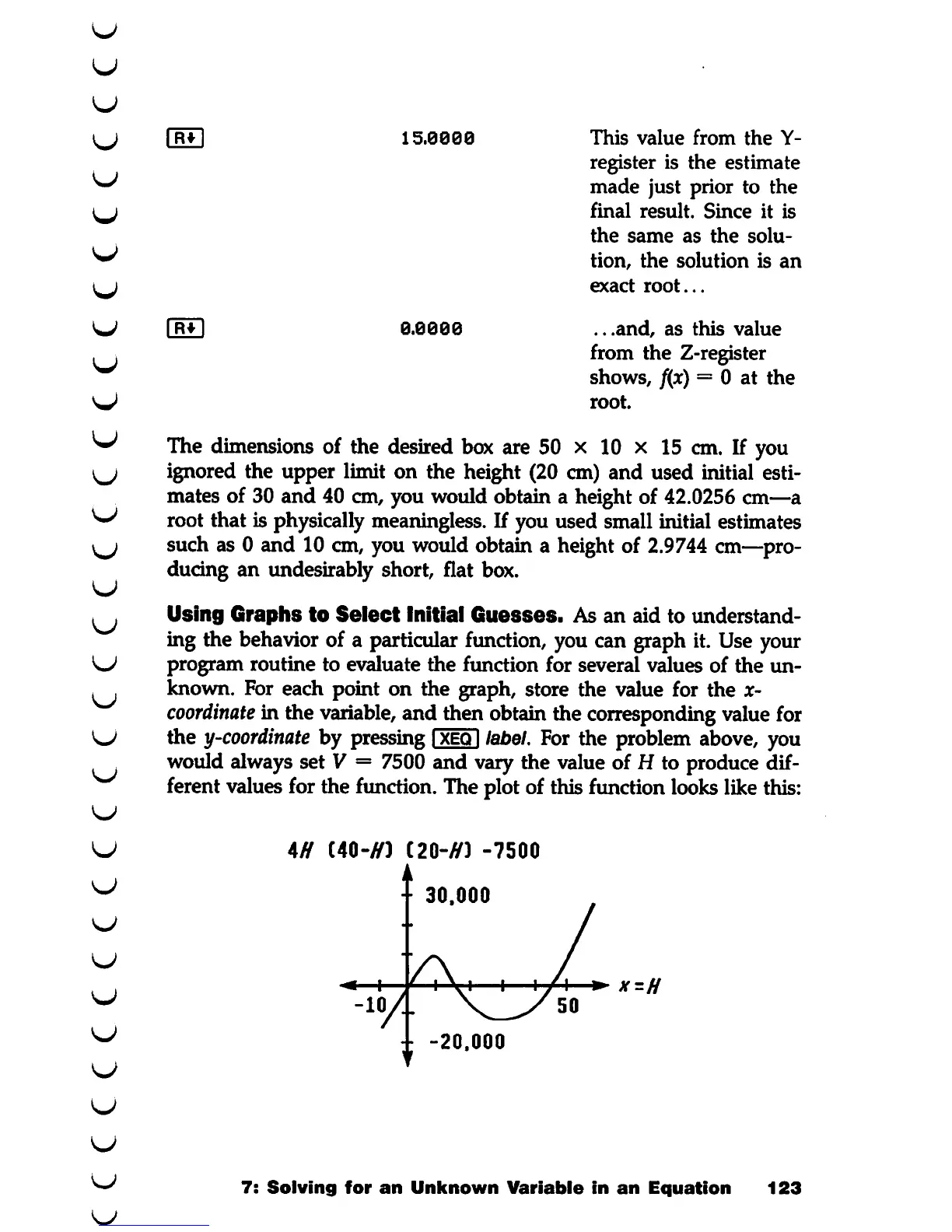LIE
HE
15.0000
0.0000
This
value
from
the
Y-
regjster is
the
estimate
made just prior to the
final
result.
Since
it
is
the
same
as
the
solu
tion,
the
solution
is
an
exact
root...
...and,
as
this
value
from the Z-register
shows, f(x) = 0 at the
root.
The dimensions of the desired box are 50 x 10 x 15
cm.
If you
ignored the upper limit on the height (20 cm) and used initial esti
mates of 30 and 40 cm, you would obtain a height of 42.0256cm—a
root that is physically meaningless. If you used small initial estimates
such as 0 and 10 cm, you would obtain a height of
2.9744
cm—pro
ducing an undesirably short, flat box.
Using
Graphs
to
Select
Initial
Guesses.
As
an
aid
to
understand
ing the behavior of a particular function, you can graph it. Use your
program routine to evaluate
the
function for several values of
the
un
known. For each point on the graph, store the value for the x-
coordinate
in the variable, and then obtain the corresponding valuefor
the
y-coordinate
by pressingIxeqi
label.
For the problem above, you
would always set
V*
= 7500 and vary the value of H to produce dif
ferent valuesfor the function. The plot of this function looks like this:
iff
C40-#)
C20-#)
-7500
i
•
30.000
-20.000
x-H
7:
Solving
ffor
an
Unknown
Variable
in
an
Equation
123

